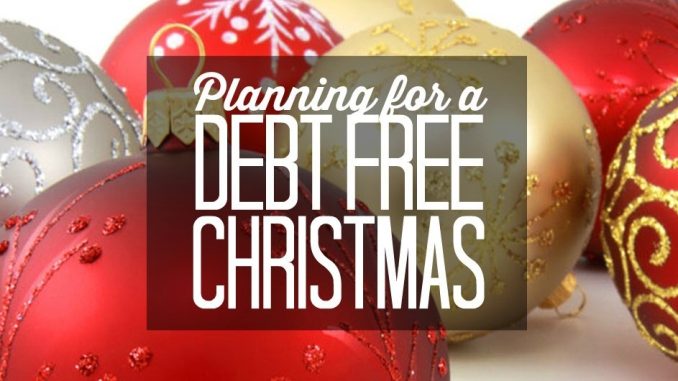
Planning a debt-free holiday season is entirely possible, but it requires a shift in mindset and a commitment to intentional spending. The holidays often come with emotional expectations—gift-giving, entertaining, travel, and traditions—that can pressure even the most disciplined budget. Without a plan, it’s easy to rely on credit cards or overspend in the name of celebration, only to face financial regret in the new year. But with thoughtful preparation and a clear understanding of your financial boundaries, you can enjoy the season fully without compromising your financial health.
The process begins well before the holidays arrive. Ideally, you’re thinking about holiday expenses months in advance, treating them like any other recurring financial obligation. Just as you budget for rent or utilities, setting aside a small amount each month for holiday spending creates a cushion that grows over time. For example, saving $100 a month starting in January gives you $1,200 by December—a substantial fund that can cover gifts, travel, and festivities without touching your credit line. This proactive approach transforms holiday spending from a reactive scramble into a planned investment in joy and connection.
Understanding your total holiday budget is essential. Rather than guessing or hoping it will all work out, take time to estimate what you’ll need. This includes gifts, decorations, food, travel, charitable giving, and any other seasonal expenses. Once you have a number, compare it to what you’ve saved or can reasonably allocate from your current income. If there’s a gap, it’s better to adjust expectations now than to overspend later. For instance, if your ideal budget is $1,500 but you only have $1,000 available, you can prioritize the most meaningful expenses and find creative ways to stretch your dollars. This kind of clarity helps you make decisions with confidence rather than guilt.
Gift-giving is often the biggest source of holiday spending, and it’s where thoughtful planning can make the most impact. Rather than buying for everyone you know, consider narrowing your list to those closest to you or organizing group gifts. Setting a per-person limit helps keep spending in check and encourages more intentional choices. For example, choosing a meaningful gift within a $30 budget often leads to more creativity and thoughtfulness than spending without limits. Homemade gifts, experiences, or personalized items can carry just as much emotional weight as expensive purchases, and they often leave a more lasting impression.
Holiday travel can also strain finances, especially if it involves flights, hotels, or extended stays. Planning early allows you to take advantage of lower fares and flexible booking options. If travel is non-negotiable, consider offsetting costs in other areas of your holiday budget. For example, staying with family instead of booking a hotel or preparing meals together instead of dining out can reduce expenses while enhancing the experience. If travel isn’t feasible, virtual gatherings or local celebrations can still create meaningful connections without the financial burden.
Entertainment and hosting are other areas where costs can escalate quickly. From holiday parties to festive dinners, the desire to impress or uphold tradition can lead to overspending. Setting a budget for these events and sticking to it helps maintain financial control. Potlucks, shared responsibilities, or simplified menus can reduce costs while still fostering warmth and togetherness. For instance, hosting a dessert-only gathering or a themed movie night can be just as festive as a full-course dinner, and often more memorable. The focus shifts from extravagance to experience, which is ultimately what people remember most.
Credit cards can be tempting during the holidays, especially when cash flow is tight. While they offer convenience and sometimes rewards, relying on them without a repayment plan can lead to lingering debt. If you do use credit, treat it like a short-term loan with a clear payoff timeline. For example, charging $500 with a plan to pay it off in two months is manageable, but charging without a plan can result in interest charges and financial stress. Whenever possible, use cash or debit to stay grounded in your actual budget and avoid the illusion of unlimited resources.
Communication is also important, especially with family and friends. Setting expectations around gift exchanges, travel plans, or hosting responsibilities can prevent misunderstandings and financial strain. For example, suggesting a Secret Santa or gift cap within a group helps everyone participate without pressure. These conversations may feel awkward at first, but they often lead to more authentic and enjoyable celebrations. People appreciate honesty and are often relieved to know they’re not alone in wanting to simplify the season.
Reflecting on past holiday seasons can offer valuable insights. If you’ve experienced post-holiday debt or stress before, consider what contributed to it and how you can avoid repeating those patterns. Maybe it was last-minute shopping, unclear budgets, or trying to meet unrealistic expectations. Learning from those experiences helps you approach the season with more wisdom and intention. For instance, starting your shopping earlier or setting clearer boundaries can make a significant difference in both your financial and emotional well-being.
Ultimately, a debt-free holiday season is about aligning your spending with your values. It’s about celebrating in ways that bring joy without financial regret. When you plan ahead, set realistic budgets, and make intentional choices, you create space for connection, generosity, and peace. The holidays become less about consumption and more about meaning, and that shift is not only financially liberating—it’s deeply fulfilling. With a little foresight and a lot of heart, you can craft a season that’s rich in spirit and light on stress, proving that the best celebrations don’t have to come with a bill.